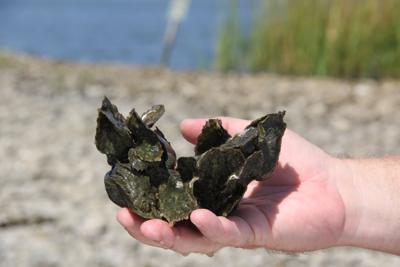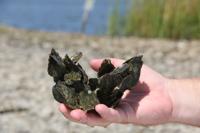MARYLAND, VIRGINIA - The Chesapeake Bay Foundation (CBF) has released a new report outlining how restoring the Bay’s native oyster populations could bolster climate resilience and community vitality.
The report, titled “Hope on the Half Shell: Harnessing Oysters to Build Ecological and Community Resilience,” prioritizes growing the oyster aquaculture industry, modernizing oyster harvesting, and targeting restoration in 20 additional Bay rivers.
“Oysters are the bedrock of the Chesapeake Bay ecosystem, long recognized for their ability to provide habitat and improve water quality. But their benefits to communities and the ecosystem extend far beyond that,” said CBF Maryland Executive Director Allison Colden. “Oysters are key to adapting to climate change, supporting local economies, and cleaning up waterways. You can’t overstate their importance to the Bay.”
CBF says Chesapeake Bay oyster populations have plummeted due to disease, overharvesting, pollution, and habitat loss. That decline has worsened water quality issues in the Bay and left critical habitats such as marshes and underwater grasses prone to erosion, according to CBF.
Recent large-scale restoration projects funded through federal investments, state efforts, and other collaborations have been crucial in reversing the decline in oyster populations, CBF says. Now, the organization calls for an acceleration of those efforts to address the effects of climate change, which a hardy oyster population can mitigate.
“With all the elements for success now in place, it’s time to seize the moment and accelerate the pace and scale of oyster recovery in Chesapeake Bay,” said Colden.
CBF’s report gives several recommendations in supporting oyster recovery, including the following:
-Accelerate the pace and scale of large-scale oyster restoration projects, restoring an additional 20 Bay tributaries by 2035 that collectively encompass 4,000 acres or more of restored oyster reef.
-Grow Maryland’s oyster aquaculture industry to 50,000 acres under lease and 500,000 bushels harvested annually by 2035. That compares to 7,500 acres under lease and 94,000 bushels harvested for Maryland oyster aquaculture in 2022.
-In Virginia, initiate an oyster stock assessment, ensure aquaculture growth in all regions, and ensure that oyster aquaculture leases are effectively utilized.
-Increase the use of oysters in shoreline protection and restoration to address sea-level rise and erosion from more intense storms due to climate change.
-Modernize oyster fishery management to increase oyster numbers. That includes utilizing the most up-to-date scientific information and methods, implementing harvest quotas, and using electronic harvest reporting.
-Manage oyster shell to grow this critical resource for oyster restoration, as well as oyster replenishment work to support oyster fisheries.
CBF says oyster sales brought nearly $57 million in revenue to Maryland and Virginia in 2022, and restoration of their populations would support millions more in helping boost populations of game fish and blue crabs.
“Increasing oyster numbers benefits all facets of life in and along the Chesapeake,” said CBF Virginia Executive Director Chris Moore. “Now let’s expand on the achievements to date. With oysters, we can adapt to climate change, support the Bay’s ecological, economic, and social resilience, and build vibrant communities where people and nature thrive together.”
CBF’s full report can be read here.


